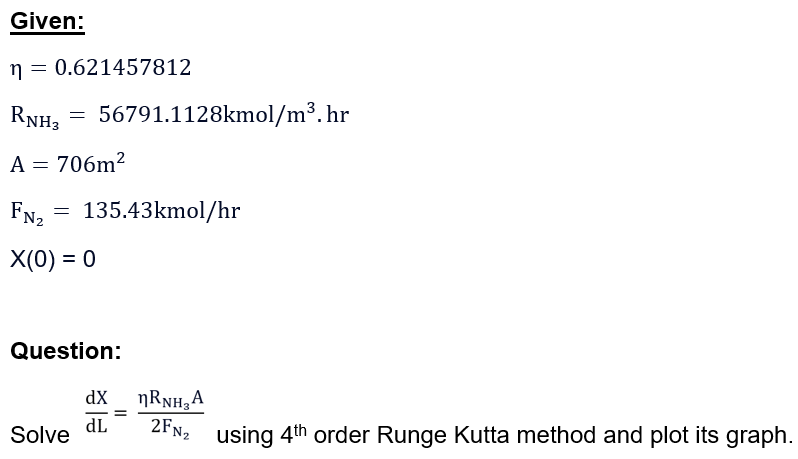Answered step by step
Verified Expert Solution
Question
1 Approved Answer
Given: =0.621457812RNH3=56791.1128kmol/m3hrA=706m2FN2=135.43kmol/hrX(0)=0 Question: Solve dLdX=2FN2RNH3A using 4th order Runge Kutta method and plot its graph. Given: =0.621457812RNH3=56791.1128kmol/m3hrA=706m2FN2=135.43kmol/hrX(0)=0 Question: Solve dLdX=2FN2RNH3A using 4th order Runge Kutta

Step by Step Solution
There are 3 Steps involved in it
Step: 1

Get Instant Access to Expert-Tailored Solutions
See step-by-step solutions with expert insights and AI powered tools for academic success
Step: 2

Step: 3

Ace Your Homework with AI
Get the answers you need in no time with our AI-driven, step-by-step assistance
Get Started


